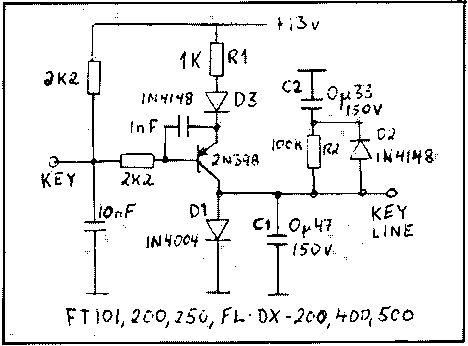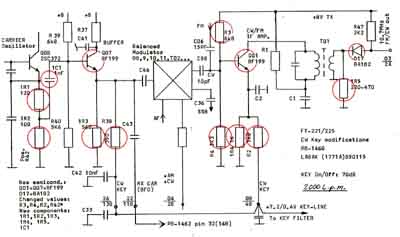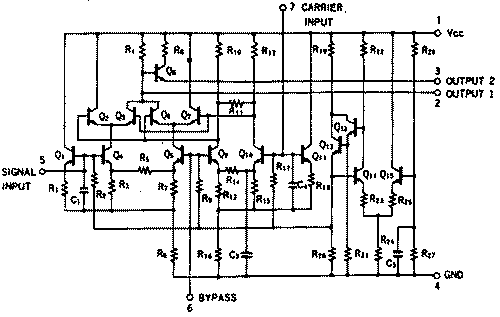
b.51) FT101B, FT221/FT225, FT726
mods
b. mods main page
FT-101B.
Read a note in Radcom about how to improve FT101B using an MC1496P
mixer, but soon discovered
that MC1496P had an IP3 of -20dBm, so how could it be an
improvement? The first problem to face
with this transceiver was the AGC, it doesn't operate properly.
After a week I discovered that it just
couldn't, it is bad carrier oscillator radiation throughout the
receiver stages, and leak is so strong that
the product detector will perfectly demodulate an ssb signal
without any connection to the BFO. So
I used it only as a transmitter, with Drake R-4C as the receiver.
It was also discovered that the CW-buffer/AM-modulator was
instable. The usual 100 ohm collector
resistor didn't cure the parasitic oscillation, so I decided to
use an RF-transistor, and BF199 (BF224)
works properly.
Reference: Present-day receivers - some cures and
cures, Ham Radio dec.1977 pp10-18
(W0JGP, K8RRH) page 16: The bulk of the problems with FT-101B
were caused by a bipolar transistor
in the noise blanker which was being overdriven.

Transistor keying for FT-101B; FL-dx-500 etc. Used 2N398 for fun,
but it isn't much difficult to find a better silicon device
<AR #3 1990 pg71>
FT-221R/FT-225R.
Later borrowed a rig from LA8SJ and tested some key
modifications for FT221R.
Discovered that it had the same carrier osc leak problems as
experienced with FT101B. Spent a week trying to find how the
signal was spread - possible via some wiring, reduced the level
50%, but still it was rather too strong into the early stage of
IF, so it was just to decide that this transceiver was not a good
idea for an operator who demands a good receiver.
But the main intention to borrow the rig was to find a solution
to high speed keying, preferably for CWMS. Found a way to make
linear keying and the real key-click problem was solved.
FT-301 is built on the same style, so it might have similar
Carrier leak problems, FT7 (and FT7B?) as well as FT901/FT902
have not these problems, AGC also seems to operate
satisfactorily. Have done few douzens mods for FT7, but none are
available as files now, and somebody borrowed my books, and
unfortunately not everybody is reliable to return the books.....

FT-221 modifications. The components marked with
red rings have been changed. The problem with chirp is
the usual problem when you don't understand capacitive pulling
from a keyed stage. And when the buffer is
pulled makes it not better. The key-up attenuation is poor and
has several reasons. Primarily the first stage
has too drive high level, it is then a problem for the next
stage, too, but further improvement can be achieved
by using RF transistors in the IF amplifier stages. BF199=BF224
are readily available in Europe at low price,
so it is really no problem to sacrifice a few (the same problem
in FT-101B). It is also a problem that key-up
voltages for the two stages are not equal, some voltage dividers
must be changed. Then I also replaced the
switching diode on the output with another BA182 which has better
attenuation.
The mod is easy and done in few minutes when you know what to do.
FT726
LA7BI wasn't satisfied with the audio quality of his FT726. First
he tried to improve the AGC, and some improvement was found, but
still it was some distortion. The datasheet for uPC1037H (Q13)
was studied and it seems that the operational voltage on PB2441A
No.20 was too high. The same device is used in other transceivers
like IC740 without any problems. The resistor R83 =56 ohm was
increased to 120-150 ohm for +6V voltage on the IC. The quality
is much improved. On later transceivers like FT736 they've gone
back to the conventional ringmodulator, obviously they are aware
of the problem.

µPC1037H (upc1037h)

2004.10.26